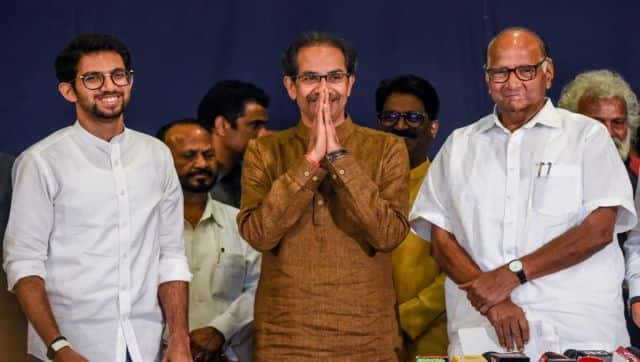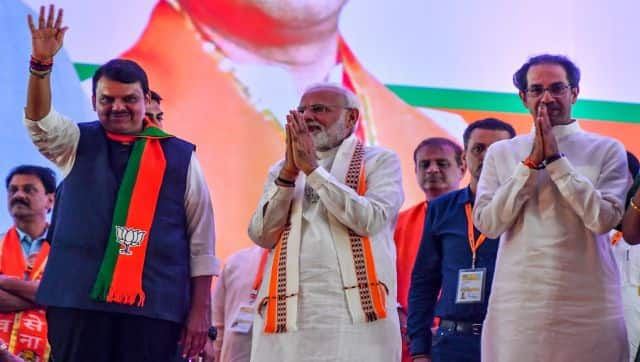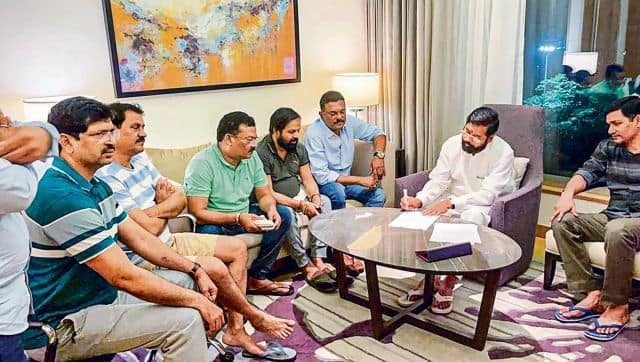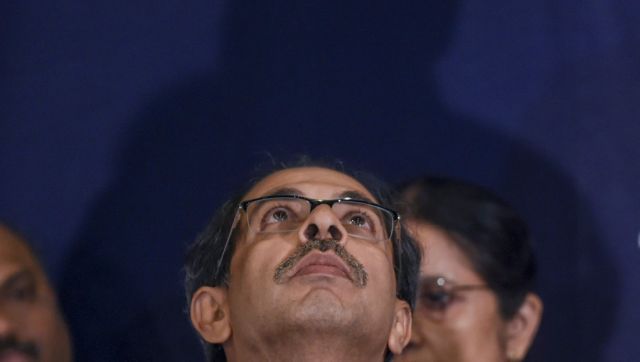A rebellion in the Shiv Sena and a Supreme Court ruling, which provided him with no reprieve from a floor test, left Uddhav Thackeray no choice but to step down as Maharashtra chief minister on Wednesday. He announced his decision to resign as both CM and member of the Legislative Council (MLC) in a Facebook address, knowing very well that he would fail to prove majority in the Maharashtra Assembly. “I have no regrets about leaving the CM’s chair. Whatever I did, I did for the Marathi people and Hindutva. Today, in front of everyone, I am announcing my resignation as CM of the state,” Thackeray said in his trademark emotional yet sincere manner. Thackeray who seemed like a hesitant politician during the era of his father and Shiv Sena supremo has come a long way since. We take a look at the highs and lows of his political career so far. The making of Uddhav Thackeray The youngest of Bal Thackeray’s three sons, Uddhav graduated from Mumbai’s JJ Institute of Applied Arts, majoring in photography. In the early 1990s, he appeared reluctant to foray into politics. He remained a step behind, as his cousin Raj Thackeray stole the limelight with fiery oratory skills to match the Sena patriarch. Many believed that Raj and not Uddhav was the rightful heir to the top position. However, as it pans out in dynasty politics, Bal Thackeray picked son over nephew and Uddhav was appointed as the executive president of the party in 2003. Raj Thackeray remained unhappy and his differences with the top leadership grew. He finally quit the Shiv Sena in 2005 and then went on to float his own party, the Maharashtra Navnirman Sena (MNS). The early challenges With Bal Thackeray still at the helm, Uddhav played second fiddle. The party faced challenges of its own with the exits of senior party leader Narayan Rane, who opposed Uddhav’s elevation, and Raj. They were big blows for the Shiv Sena but the Thackerays held the Sena together. Rane’s attempts to split the party remained unsuccessful. After the senior Thackeray died in 2012, Uddav took over the reins of the party. Criticism was rife. Mild-mannered, Uddhav was nothing like his fiery father; he was not overly aggressive like a major of the Sena cadres. Many wondered if he would be able to carry his father’s legacy forward but he held his own. [caption id=“attachment_10854281” align=“alignnone” width=“640”]  Uddhav Thackeray and his son Aadtiya with NCP chief Sharad Pawar. Shiv Sena’s alliance with its former rival did not go down well with the party cadres. AFP[/caption] A ‘soft’ Shiv Sena For ten years since the death of the supremo, Uddhav kept the party going. The Shiv Sena performed far better than the rival MNS, which is largely reduced to the fringes in Maharashtra politics. Uddhav also brought his own touch to the party, which started as the “sons of a soil movement” and later went on to adopt Hindutva as its chief political agenda. Under Uddhav, the party, many believed, softened. Its aggressive communal politics, street protests and bullying tactics took a backseat. But as they say, old habits are hard to die. Thackeray demanded a permit system for Biharis, called Godse a patriot and the party demanded a National Register of Citizens for throwing out the “Bangladeshis”. [caption id=“attachment_10854301” align=“alignnone” width=“640”]  The Shiv Sena rebels believe that the BJP is a natural ally of the party. AFP[/caption] The Sena took a slightly liberal turn after 2014, as the Bharatiya Janata Party (BJP) became unstoppable and ate into its vote bank. The relationship between the two allies began to sour. In 2014, the Shiv Sena and the BJP contested the Maharashtra Assembly elections separately because of a disagreement over seat-sharing. However, they formed a post-poll alliance with the BJP winning 122 seats and the Sena 63. Uddhav became critical of the Narendra Modi government, a move that was not appreciated in the party ranks. But ahead of the 2019 elections, the goalpost shifted and the party allied with the BJP to reinstate Modi as prime minister. Uddhav, the CM However, things came to a head during the 2019 Maharashtra Assembly elections. The two parties split after a win after the BJP refused to share the chief ministerial post. A president’s rule was imposed in Maharashtra in November 2019 following a stalemate over government formation. Thackeray then turned to the Nationalist Congress Party (NCP), a Sena rival for years, and the Congress. Together they formed the Maha Vikas Aghadi (MVA) government with Uddhav as the chief minister and two deputy chief ministers – one from the Congress and the NCP. He took oath on 28 November 2019, becoming the first Thackeray to hold a public office. This again was unlike his father who always picked a Shiv Sainik for the top job, even as he wrested control of the party. This is when the trouble started brewing within the party. The Sena leaders and cadres were not too happy to be part of the unnatural alliance with old rivals, the NCP and the Congress. The party workers were angry at the decision to break away from the BJP with whom the original ideology of the Shiv Sena aligned. They felt out of character as the party backed more “progressive causes” like the felling of trees in the Aarey forests for building a metro line and taking on the BJP. The big wins and the bigger losses While the Devendra Fadnavis government was in power, it backed the Metro project. A year on, as the political scenario changed, Uddhav junked the Metro shed and shifted the project to Kanjurmarg. The BJP was not happy as this would not only delay the much-needed Metro line but also lead to a huge escalation in cost. For Uddhav, this was a victory. But amid all, this the party cadre continued to feel distanced. [caption id=“attachment_10854311” align=“alignnone” width=“640”]  The Eknath Shinde camp complained that Uddhav Thackeray was inaccessible. PTI[/caption] Then came the COVID-19 pandemic. Maharashtra became the worst-hit state in the country. It was a big challenge but Uddhav told the common man that he was standing with them. During the first wave of infections, the Dharavi model to combat the pandemic was appreciated globally. In the second wave, the Supreme Court, the Bombay High Court, the Centre, social organisations, entrepreneurs, citizens and dignitaries praised Thackeray’s vision for Maharashtra, which has been hit hard by the outbreak, says a report in News18. The chief minister in his frequent Facebook addresses empathised with people. But he seemed to have ignored those closest to him – his party leaders and workers. They felt unheard and thought that their leader was unaccessible. They felt Uddhav surrounded himself with his a coterie and seemed to disappear into Matoshree. Some of that distance was on account of Covid and a surgery that left Uddhav incapacitated for long, but there was no one to keep the troops in the loop, says a report in The Indian Express. From time to time, the chief minister would try to reclaim the Hindutva agenda. But the message did not trickle down to the ranks. The disappointment that festered over the years all boiled down to the rebellion now led by Eknath Shinde. Even during the current crisis, he reiterated that the Sena was a backer of Hindutva and the true inheritor of Thackeray’s legacy. But it was too little too late. Uddhav many have won a few hearts but he seems to have lost the plot – and the party. With inputs from agencies Read all the Latest News , Trending News , Cricket News , Bollywood News , India News and Entertainment News here. Follow us on Facebook, Twitter and Instagram.
Uddhav Thackeray changed the ways of the Shiv Sena; many believe he ‘softened’ the party. While he won the hearts of a handful of liberals as he took on the BJP and backed causes like Aarey, he distanced himself from the party, eventually losing its trust and a lot more
Advertisement
End of Article


)
)
)
)
)
)
)
)
)



